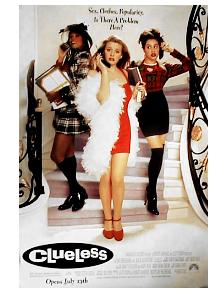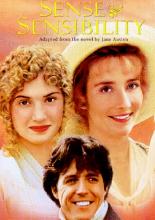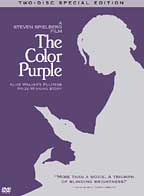Points
of Difference
Films and novels differ
in many
ways, and because of these differences the way they convey their
themes,
plots, and characters will necessarily differ. Three of the most
obvious differences between films and novels are found in the scale,
the level of realism they convey, and the
reflection
of the author or filmmaker's ideology.
A
Question of Scale
 |
Since the
screenplay for
a standard feature film runs between 80 and 110 pages and a novel
normally
runs more than 200 pages, when a novel is adapted to film the story is
necessarily shortened. The screenwriter, director, and producers
make decisions to cut scenes, characters, and even major elements of
the
original piece in order to fit the standard 90 to 120 minute feature
film
length. Occasionally, the filmmakers will opt to make a longer
film,
but this is usually considered a risk, unless the original work is so
well-known
that the audience might invest the extra time in the theatre.
(Kenneth
Branaugh’s Hamlet, for example, cuts very little of
Shakespeare’s
original play and runs over three hours.) But the most common
preference
is to shorten the original story in some significant way. |
| The other
option that is
sometimes taken when adapting literature into film is the mini-series.
These adaptations are necessarily television-based and lose some of the
visual and aural quality found in films made for the wide-screen.
They also run from three to six hours and are generally shown over a
period
of successive nights or weeks. These showings might include
commercials
(as was the case with the BBC/A&E version of Jane Austen’s Pride
and Prejudice) or might be shown commercial-free, as in the PPS
series, Masterpiece
Theatre. In either case, the ultimate viewers will be
video-tape
or DVD renters or purchasers. The aesthetic value of these
adaptations
can be very different because of the length and the television-based
viewing. |
 |
In any case, when
adapting
any work of literature—most specifically a novel—into film, the
filmmakers
must make some changes in scale. When writing an analysis of the
adaptation, therefore, the student should carefully consider the value
of these changes: how do they affect the ultimate impact of the work of
art?
What
is Real?
Henry James wrote
that literature’s
aim is to present a version of real life. But each reader “sees” a
different
vision of the work of literature, so the idea of reality is interpreted
by each of those readers. Similarly, when filmmakers interpret the
“reality”
found in a work of literature, the final vision reflects not only the
ideas
of the original author, but also the vision of the filmmakers.
 |
Adaptations
can
roughly be divided into two categories: straight or loose. For
example,
Jane Austen’s Emma was adapted to film in 1996 in a Miramax
production
starring Gwyneth Paltrow. This version retained the original
period,
setting, and most of the plot and characterization. This production
credited
Jane Austen and made the most of the Nineteenth Century
connection.
In 1994, however, Amy Heckerling wrote and produced Clueless,
set
in contemporary Beverly Hills. Most of the plot and themes of
Austen’s
original were retained, but many of the characters’ names and all of
the
original setting were updated. Both adaptations have value in
understanding
Austen’s work, and each should be considered as a valid, although
different
adaptations of the original.
|
 |
Ideology
is Relative
| Sometimes,
however, a filmmaker’s
attempt to stay true to the original text is thwarted by contemporary
sensibilities,
and the screenwriter or director’s ideology will come through the film
when it was not present in the original work. For example, in
Patricia
Rozema's 1999 adaptation of Jane Austen’s Mansfield Park, a
bold
commentary about slavery is added to the film, where it is a mere
reference
in the novel. And in Emma Thompson’s 1995 screenplay of Austen’s Sense
and Sensibility, she allows one of the main characters, Elinor
Dashwood,
to make a pointed commentary about the predicament of women in her
society
that Austen would not have been able to make in her novel. In
each
of these cases, the film adaptation is changed to project messages
deemed
important by the filmmakers, not by the original author. |
 |
 |
In a
similar way,
Steven Spielberg made many ideological changes in his 1985 adaptation
of
Alice Walker’s novel, The Color Purple. Many of these
changes,
it is assumed by Walker and various critics, were made in order to
popularize
the controversial novel. In this case the ideology of the novel
was
modified, and Walker found it necessary to write a book about her
experience
with the adaptation process. (The Same River Twice, Simon
& Schuster, 1995). Thus, considering the themes as well as
the
ideological basis for the original work of literature is important in
analyzing
a film adaptation. Considering the contemporary context of both the
original
work and the film is important when writing about film adaptation.
|

Home
| Critical History | Bibliography
| Links | References
Reading
| Points
[Top]



